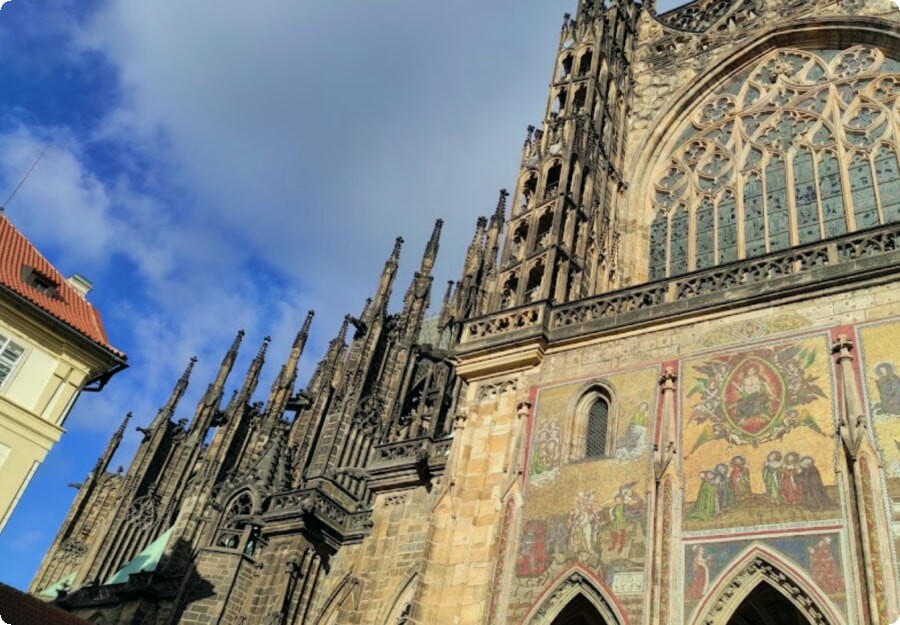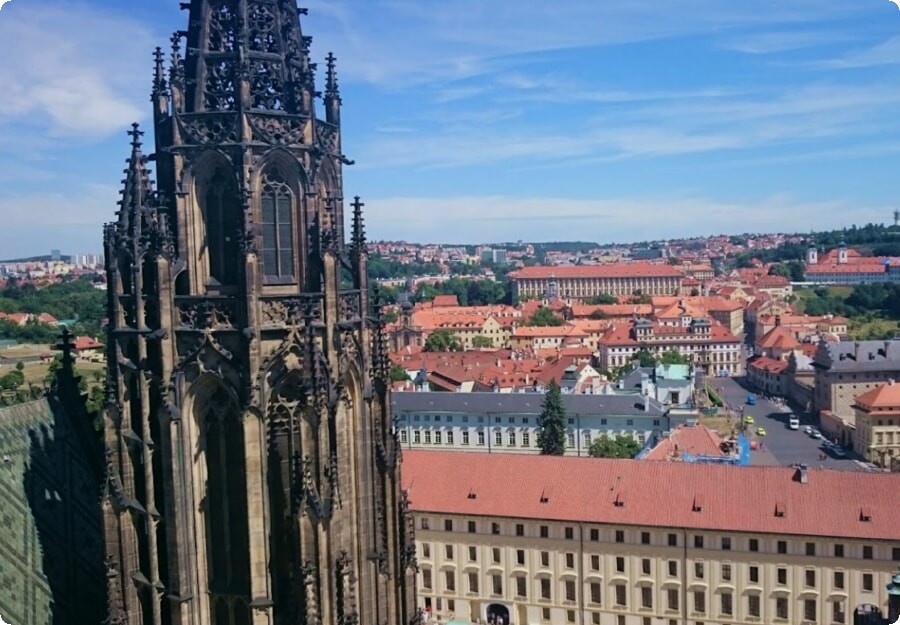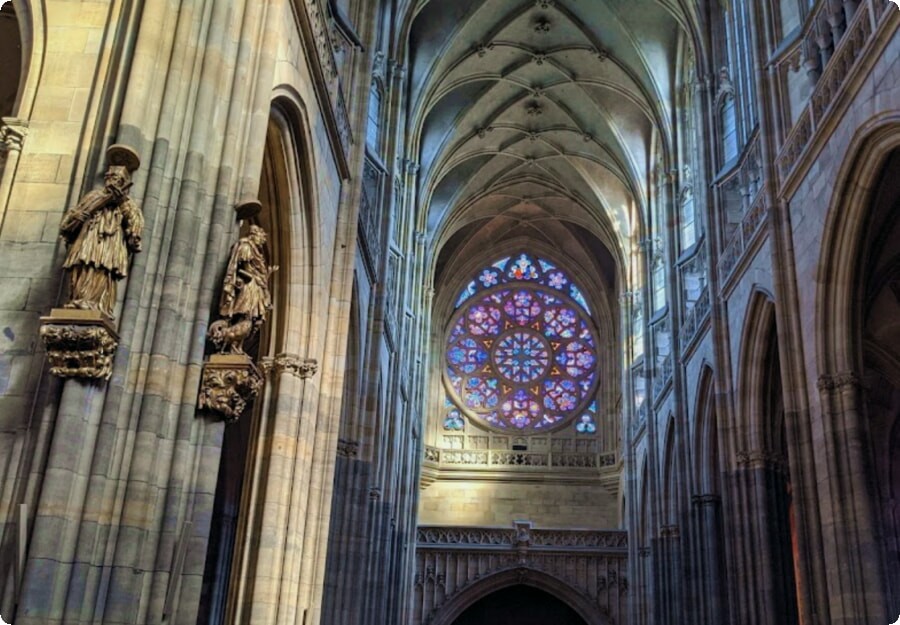St. Vitus Cathedral - an architectural wonder of old Europe
Perhaps there is no person who would not admire the Gothic buildings of old Europe. They amaze the imagination, and even an inexperienced layman recognizes the majesty of the architectural style. One of these buildings is St. Vitus Cathedral. The precious gem of European Gothic evokes awe and admiration for anyone who sees it at least once. No one can argue with the exclusivity of the cathedral, watching as sharp spiers pierce the chest of the sky. Despite the fact that the cathedral has a Gothic base, elements of both Neo-Gothic and Baroque are mixed in it. Therefore, if you decide to spend your holidays in Czech Republic, then visiting the church is your main task.

For a comfortable trip, many tourists prefer to use car rental services in the Czech Republic. The average cost of renting a car in Prague is 18 euros per day, in Karlovy Vary - 19 euros per day.
Construction history
The construction of the cathedral dates back to 1344. Czech Republic has known its dawn, and therefore the time has come for grandiose projects. The cathedral was built on the site of a demolished Romanesque basilica to become the official seat of Archbishopric of Prague. Mathieu French architect from Arras undertook the construction. Under his leadership, a basilica was built with a de-ambulatory and a crown of chapels. The architect died in 1353, and was replaced by the 23-year-old Swabian master Gmund Peter Parler. He participated in the building of Cologne Cathedral and therefore the construction of a new project was in good hands. As a result, the construction of the temple became the work of his whole life. His sons Wenceslas and Jan in 1397 continued the work of their father.

However, in 1419 the Hussite Wars began. To contain the pressure of the Hussites, the construction of the cathedral was suspended. Wars between Protestants and Catholics exhausted the human and financial resources. There were attempts to resume construction, but in the end they were not crowned with much success. And only in the middle of the nineteenth century a construction team was created to finish what had been started.
St. Vitus Cathedral, Wenceslas and Vojtech took six hundred years to build and became the quintessence of different architectural styles and visions of many generations of architects. The temple was completed in 1929, and at the moment it is the main shrine of Czech Republic, the treasure of the nation.

Description of the temple
The grandeur of the cathedral is amazing. From the outside, it is decorated with turrets and ornaments made in the Gothic style. Above the side entrance is the only mosaic in the Czech Republic that depicts the Last Judgment. The cathedral itself seems to be trying to protect itself from the outside world with the buildings around it, when viewed from afar. But if you come close, he will rise above everyone, like the sword of Damocles.
From the inside, St. Vitus Cathedral amazes with an incredible panorama: neo-Gothic architecture in the center with a ribbed vault of 33.5 measures smoothly passes into the choir areas. Around the choirs and behind the altar there is an oval passage with a number of chapels. In total, there are nineteen chapels in the temple. Parishioners inside the cathedral are embraced by a special light. Not only stained-glass windows create this effect. The main feature that creates a feeling of something sublime and divine is the huge height of the room and large windows located at the level of the upper tier. Therefore, the cathedral is permeated with light, and its majestic interior space seems whole and light. Gothic arches put special emphasis on the direction of the temple upwards.

Of greatest interest is St. Wenceslas Chapel. The remains of the saints of Czech Republic are buried in it. In its center is a Gothic tombstone of St. Wenceslas made of stone. It is decorated with gold and precious stones. Such a wealth of decoration is justified by the fact that St. Wenceslas is the heavenly patron of Czech Republic. Therefore, he is given a special part and honor.